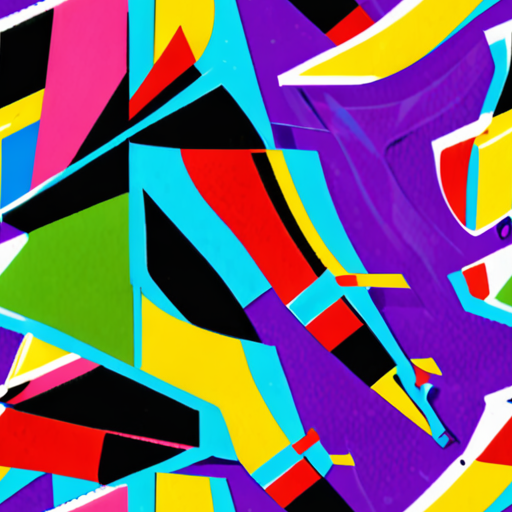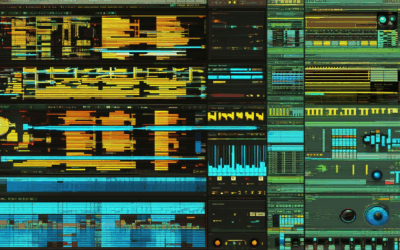Creating a memorable band image and brand is crucial for musicians and bands looking to stand out in a crowded market. Whether it’s through striking visuals, unique branding strategies, or cohesive messaging, the way a band presents itself plays a pivotal role in shaping its identity and connecting with audiences. From designing iconic logos to crafting a brand identity that resonates with fans, every element of a band’s image and branding efforts contributes to its overall success. This guide delves into the essential aspects of crafting a standout band image and brand, exploring everything from the importance of visual consistency to the legal considerations of band logos. By understanding the complexities of music branding, bands can establish themselves as recognizable and respected entities in the industry.

Understanding Image and Branding
Image and branding are two crucial concepts in marketing and business that are often discussed together but have distinct meanings.
Brand Image
Brand image refers to the mental picture or perception that people have of a company, product, or service. It encompasses how the brand is seen in terms of qualities like reliability, innovation, trustworthiness, and emotional appeal. For example, Apple is often associated with innovation and style, while Coca-Cola is linked to comfort and reliability. This image is formed through various channels, including advertising, packaging, customer service, and word-of-mouth.
Branding
Branding is the process of creating a distinct identity for a company or product through design, marketing, and communication strategies. It involves elements like logos, taglines, color schemes, typography, and advertising campaigns. Effective branding aims to create recognition and build a strong presence in the market. The goal is to differentiate a brand from its competitors and establish a unique position in the minds of consumers.
Difference Between Image and Branding
While brand image is the perception people have of a brand, branding is the process that shapes and influences that perception. Branding involves all the elements that contribute to the brand’s identity, including its personality, values, and mission. The brand image is thus influenced by the branding efforts but can also be affected by external factors like customer experiences and industry trends.
Building a Strong Brand Image
To build a strong brand image, companies must consistently deliver on their promises and maintain a coherent message across all touchpoints. This includes having a clear brand identity that guides all decisions, from product development to customer service. Understanding the target audience and tailoring the branding to resonate with their needs and preferences is also essential. By focusing on consistency, authenticity, and quality, businesses can shape a positive and enduring brand image that aligns with their long-term goals.
The Importance of a Band’s Image
Your band’s image is one of the most critical aspects of your identity as a musical entity. It serves as the visual representation of your sound, style, and ethos, helping people instantly recognize and connect with your work.
1. **Branding and Recognition**: A strong, consistent visual identity helps differentiate your band from others in the market. It conveys professionalism and seriousness, which is crucial for attracting potential clients and promoters.
2. **Social Media Impact**: In today’s visually-driven world, social media platforms like Instagram, Facebook, and TikTok rely heavily on images. A striking photo or video can quickly gain traction, helping you reach a wider audience and grow your follower base.
3. **Live Performances**: High-quality images from your live performances can showcase your energy and stage presence, making you more appealing to bookers and event organizers. These images also serve as promotional tools for future shows.
4. **Merchandise and Memorabilia**: Your band’s image appears on merchandise such as T-shirts, posters, and albums. These items act as lasting mementos and help sustain your fanbase between live performances.
5. **Fan Engagement**: Images can evoke emotions and tell stories that may not be fully captured by music alone. They foster a deeper connection with your audience, making your band feel more personal and relatable.
6. **Online Presence**: A professional and cohesive visual identity is essential for your website and other online platforms. It ensures consistency across all channels and enhances your overall online presence.
7. **SEO Benefits**: Optimizing your images with descriptive metadata, such as filenames and alt texts, can improve your search engine ranking. This makes your band more discoverable online.
8. **Ticket Sales**: Eye-catching promotional materials with high-quality images can significantly boost ticket sales. They create excitement and convey a sense of energy, encouraging more people to attend your events.
In essence, your band’s image is more than just visuals—it’s a powerful tool for branding, marketing, and connecting with your audience. It plays a pivotal role in shaping your band’s identity and contributing to its long-term success.

How to Brand Your Band
Branding your band effectively is essential for creating a unique identity that resonates with your audience and sets you apart from competitors. Here’s a step-by-step guide to help you establish a strong brand presence:
- Define Your Unique Style and Mission: Start by identifying what makes your band distinct. Consider your music genre, stage presence, and the message you want to convey. Create a mission statement that encapsulates your vision, such as “To connect rock enthusiasts worldwide through authentic music and culture.”
- Develop a Consistent Visual Identity: Your branding extends beyond just your name. Choose a logo, color scheme, and typography that align with your style. Use dark, bold colors with metallic accents to reflect an edgy rock vibe, and incorporate musical notes or instruments into your design.
- Establish a Strong Name and Slogan: Your band’s name should be memorable and easy to spell. Pair it with a catchy slogan that reflects your mission, like “Rock Without Limits.” Ensure your name and slogan are prominently displayed in bold, eye-catching fonts whenever used.
- Create a Compelling Online Presence: Your website serves as your digital hub. Optimize it with high-quality images, videos, and content that showcases your music and personality. Include sections for bio, discography, tour dates, and fan engagement tools like newsletters and social media links.
- Build a Social Media Strategy: Engage with your audience on platforms like Instagram, Facebook, and Twitter. Share behind-the-scenes content, tour updates, and interactive polls to foster a loyal community. Collaborate with influencers and other bands to expand your reach.
- Design Merchandise and Products: Create a variety of merchandise featuring your logo and artwork. Offer items like T-shirts, hoodies, vinyl records, and posters. Sell these through your website or partner with local stores to reach more fans.
- Engage with Your Audience: Regularly interact with fans through surveys, contests, and meet-and-greet events at your performances. Collect email addresses for newsletters and updates to keep your audience informed and engaged.
- Pursue Strategic Partnerships: Collaborate with other bands, artists, and influencers to cross-promote events and content. Write guest blogs for music platforms and participate in music festivals to gain exposure.
- Monitor and Adapt Your Brand: Track your brand’s performance through analytics and feedback. Adjust your strategies based on what works best to maintain relevance and appeal. Stay adaptable to evolving trends and audience preferences.
By following these steps, you’ll create a cohesive and impactful brand that connects with your audience and stands out in the music industry.

Do Bands Still Use Logos?
Bands and musical groups continue to use logos in their branding efforts, much like any other business or organization. Logos serve as a visual identifier, helping fans recognize the band and its associated products, merchandise, and performances.
Reasons Why Logos Are Important for Bands Today
- Brand Recognition: A logo creates an instant visual connection with fans, making it easier for them to identify the band’s music, merchandise, or events.
- Consistency Across Platforms: Logos ensure that the band’s branding remains consistent across all platforms, including social media profiles, websites, and physical products.
- Memorable Identity: A well-designed logo is often the first thing people remember about a band, contributing to its long-term success and fan loyalty.
- Professionalism: A professional logo reflects the band’s dedication to its craft and helps establish credibility among fans and the music industry.
Examples of Successful Band Logos
Many iconic bands have maintained their logos over decades, evolving them slightly while keeping their core design intact. For instance, the logos of bands like Oedipus Band , The Rolling Stones, and U2 are instantly recognizable and have become part of their identity.
Modern Trends in Band Logos
As music consumption shifts towards digital platforms, many bands are incorporating dynamic, animated, or interactive logos into their branding. These designs aim to stand out in digital spaces while maintaining the traditional elements that fans love.
In conclusion, logos remain a crucial element of a band’s branding strategy, enabling them to connect with fans, maintain consistency, and build a strong visual identity in the competitive world of music.
Can I Use Band Logos Without Permission?
Logos are typically protected under copyright and trademark law, making unauthorized use illegal. Using a band’s logo without permission can infringe on their intellectual property rights. This applies to both registered trademarks and unregistered designs. Unauthorized use may result in legal consequences, including lawsuits.
Exceptions are rare and usually limited to personal use, but commercial use almost always requires permission. Altering logos for parody purposes may be permissible under certain circumstances, but this varies based on intended use and context.
For safety and compliance, always obtain explicit permission before using any logo, particularly for commercial purposes. Bands often enforce strict policies regarding logo usage, so it’s advisable to respect these rights to avoid legal or reputational risks.

The Most Famous Band Logo
The most famous band logo in history is often debated, but several designs stand out for their iconic status. Here are some of the most recognizable ones:
- The Rolling Stones : The band’s logo features Mick Jagger’s exaggerated lips, originally designed by John Pasche in 1971. It has become one of the most iconic symbols in rock history, representing the band’s energetic performances and Mick Jagger’s larger-than-life persona.
- Led Zeppelin : Their logo, designed by John Paul Jones, incorporates the infinity symbol and the band’s name. It has remained almost unchanged since its debut in 1969 and is instantly recognizable worldwide.
- The Beatles : While not as universally recognized as some other logos, the Beatles’ early design, created by Cassen & Partners, remains a cultural icon. Its simplicity and association with one of the most influential bands of all time contribute to its fame.
- The Grateful Dead : The band’s logo, featuring a skeleton with a bear hat, was created by Bob Thomas in 1966. It has become synonymous with the counterculture movement and remains a beloved symbol among fans.
These logos have transcended time and remain instantly recognizable, making them some of the most celebrated in music history.



0 Comments